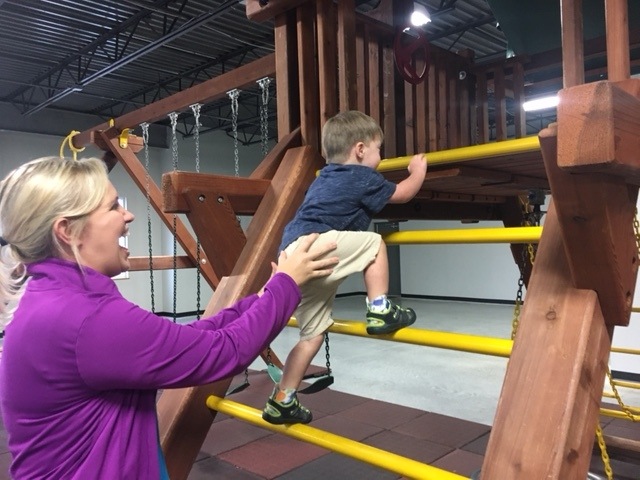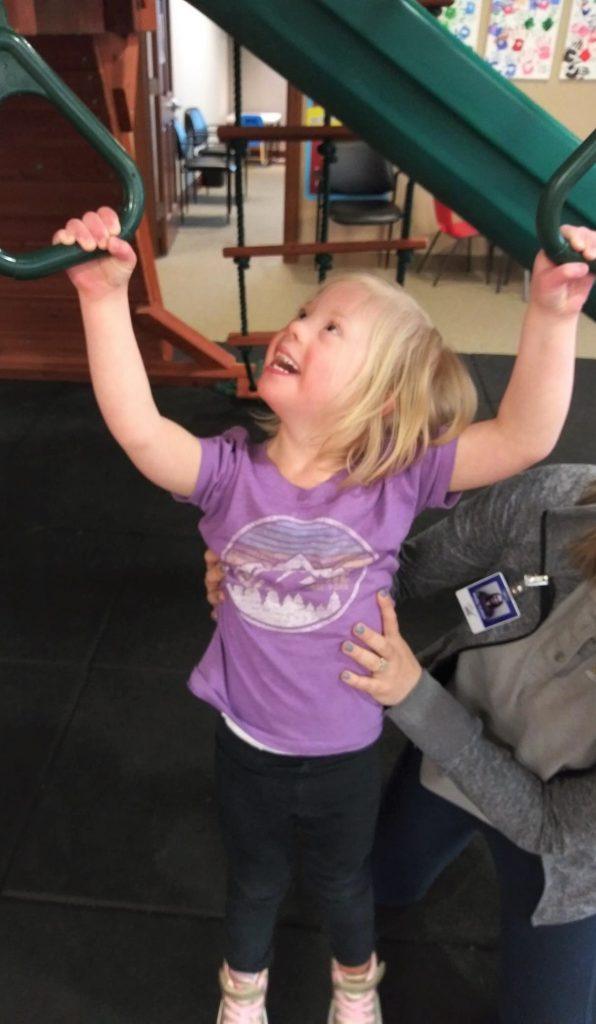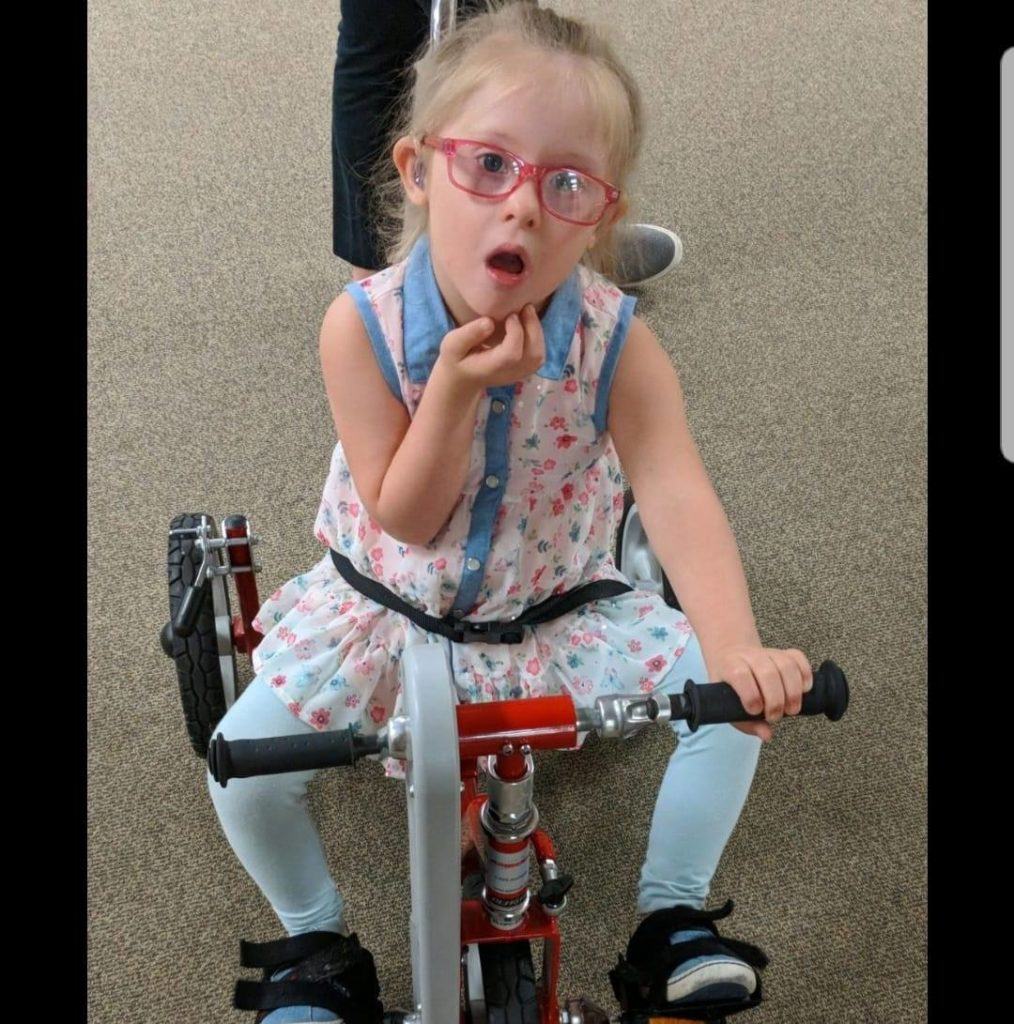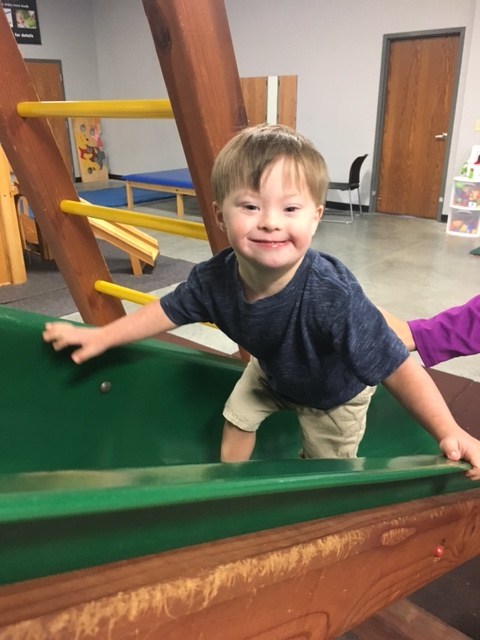The Gross Motor Path
Your child’s physical therapist will design a home exercise program that is specific to your child’s needs. Each phase is a BIG STEP to being ON THE GO!
Starting Line:
- Mobility begins with a strong foundation
- This means strong back and belly muscles
Phase One:
- Rolling from back to belly
- Rolling from belly to back
- Sitting on their own
Strengthening Tip: your child cannot spend enough time on their tummy. Tummy time strengthens neck, back and arm muscles as well as contributes to a nicely shaped head.
Phase Two:
- Move from sitting to belly
- Move from belly to sitting
Interesting Fact: Children with low muscle tone will sometimes lean their body straight forward, putting their head between their knees in order to get from sitting to on their belly. Discourage this if you can. We prefer that they rotate to their side and go through side sit instead. Why? So your child does not over stretch soft tissue. We want your child to use the correct muscles to increase the muscle strength.
Phase Three:
- Commando crawling on belly
- Pushing up on their hands and knees from their belly and rocking back and forth
Put up the baby gates!
Phase Four:
- Creeping (crawling) on hands and knees
- Standing at a support surface, such as a bench or small table
- Pull up to stand at a support surface
Interesting Fact: Children with low muscle tone will sometimes creep with one knee on the ground and one foot on the ground, instead if using both knees. Encourage them to creep using both knees.
Phase Five:
- Cruising (walking sideways using hands for support) along a support surface
- Cruising in between support surfaces
- Starting to briefly stand on their own without holding onto anything
- Creeping up and down stairs
Interesting Fact: At this phase, your physical therapist may introduce a gait trainer or walker to use in therapy. It can help build the muscles of the legs for walking. They may also may introduce orthotics to help your child with foot and ankle support that can help them with walking.
Phase Six:
- Walking with holding onto mom or dad’s hands
- Walking with a push toy
- Standing for longer periods of time
Phase Seven:
- Walking with only one hand held
Phase Eight:
- Taking the first independent steps!
Interesting Fact: Your child’s legs will be far apart and their arms may be up in the air – this is okay. They use this posture to help them balance.
Phase Nine:
- Walking!
- Standing up from the center of the floor
Phase Ten:
- Walking on uneven surfaces such as grass and mulch
- Walking up and down stairs
You officially have a walker!
Phase Eleven:
- Throwing large and small balls
- Kicking a ball
- Jumping up, down and forward
- Running
- Climbs and slides
- Rides a trike progressing to a bike
- Hops on 1 foot
- Skips
- Propels self on swing
Never stop pushing their potential!
Developmental Checklist
Is your child meeting their developmental milestones?
 Skip to content
Skip to content



